Flying Officer Roderick William Parke Mackenzie (1921-1942)
by Alison Bailey March 2023

Flying Officer Roderick WP Mackenzie is one of the 18 names commemorated on the base of the Chesham Bois War Memorial which were added in 1949. 90-year-old Victor Hill recently contacted the Chesham Bois Parish Council hoping to find members of the Mackenzie family so that he could let them know the incredible bravery of this Spitfire pilot’s last moments which he witnessed 81 years ago. After finding various members of the family, this is the story we uncovered.
Roddy, as he was known, was just 21 years old when his Spitfire was badly damaged by enemy fire in Northern France. He made it back to the Kent coast at Dover, but rapidly losing height, he left it to the last minute to bail out, so he could direct the plane towards open country and away from houses below. His parachute became entangled in the stricken plane, and he died in the crash.
Back home in Chesham Bois, he left behind his widowed mother, Tessie and two younger brothers, John, 17 and Ross, 13. John later followed his brother into the RAF, becoming a Halifax Bomber pilot. He survived the war, but his experiences had a serious effect on him.
Early Life

Roddy was born in Brixton Hill, South London to Agnes Teresa (Tessie) Parke and Murdock (Murdo) Mackenzie. Tessie was Murdo’s third wife. Murdo was originally from Inverness but followed two of his brothers to Australia where he married twice (his first wife died in 1900). In 1916, he was sent over to London by the Sydney firm of Mauri Brothers and Thompson Ltd as their UK representative.

He settled in Brixton where he met Tessie, who was 25 years younger than him. They started a relationship although he still had a wife and family back in Australia. Roddy was born in 1921, followed by John in 1924. Murdo and Tessie married in 1927 after the death of his second wife and moved to Leigh-on-Sea where (James) Ross was born in 1929. Roddy and John went to Beverley School in Leigh-on-Sea.
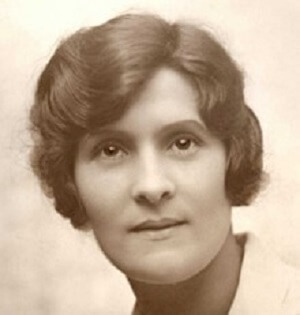
As a girl, Tessie Parke had worked as a child actor. From 1908 to 1912 she was in some of the early performances of Peter Pan, where it is believed that the roles of the Baby Mermaid and Liza were created especially for her.
Murdo established the firm Mackenzie Hosiery Co. Ltd at Long Eaton Nottingham which must have been successful as the family were able to move in the 1930s to a large house, Sycamores (now Punch Tree House), on Sycamore Road, on the boundary between Chesham Bois and Amersham-on-the-Hill. The boys were then educated privately at Berkhamsted School where Roddy excelled at sport.

Murdo died in 1938 and three years later Tessie and the boys moved to a new, smaller house, Minting on Chiltern Road, which their neighbour, Stanley Comben, of the building firm Comben and Wakeling built for them.
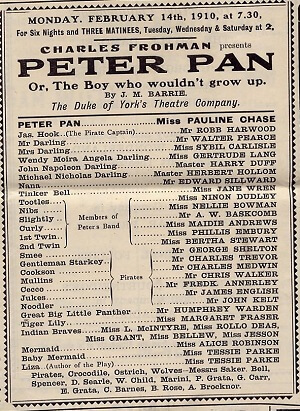
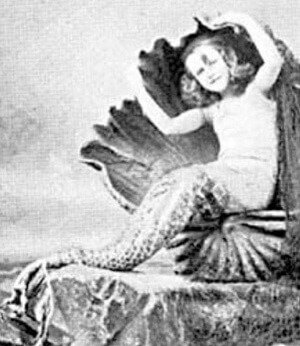
Berkhamsted School
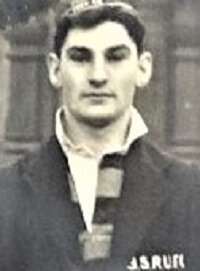
All three brothers attended Berkhamsted School as Day boys in the houses Adders and St. George’s. Roddy was there 1933-1937, John 1935-1941 and Ross, 1937-1947 after attending Meadows Prep School in Amersham.
Roddy played for the U15s/ U16s, 2nd XV (colours) and 1st XV (colours) Rugby teams. He was also a member of the house teams for Cross Country, Long Runs, Swimming, Shooting VIII and Boxing. He sat his School Certificate and attained his Cert ‘A’ as a Lance Corporal in the School’s Officer Training Corps.

Roddy left school at 16 to start an apprenticeship as an aeronautical engineer at Rolls Royce in Derby. His death was announced in the July 1942 issue of the school magazine; the In Memoriam notice reads ‘Killed on active service’ 9th March 1942. His name also appears on the school WWII Memorial, situated in the Chapel cloisters.
WWII
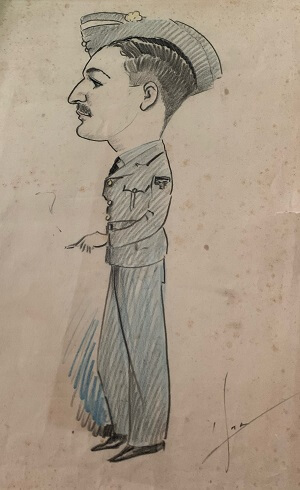
When war broke out, and Roddy turned 18, he volunteered for the RAF Volunteer Reserve, despite being in a reserved occupation. After training as a pilot, he joined 118 Squadron; a fighter squadron equipped with Spitfire Mark II Fighters. From April 1941 the Squadron was based at RAF Ibsley in Hampshire and flew escort missions for anti-shipping strikes, as well as defensive patrols and fighter sweeps over northern France. The Wing Commander was 25-year-old Ian “Widge” Gleed, a veteran of the Battle of Britain, a flying ace, and a dynamic, charismatic leader. RAF records show that Roddy shot down two Messerschmitt fighter planes.
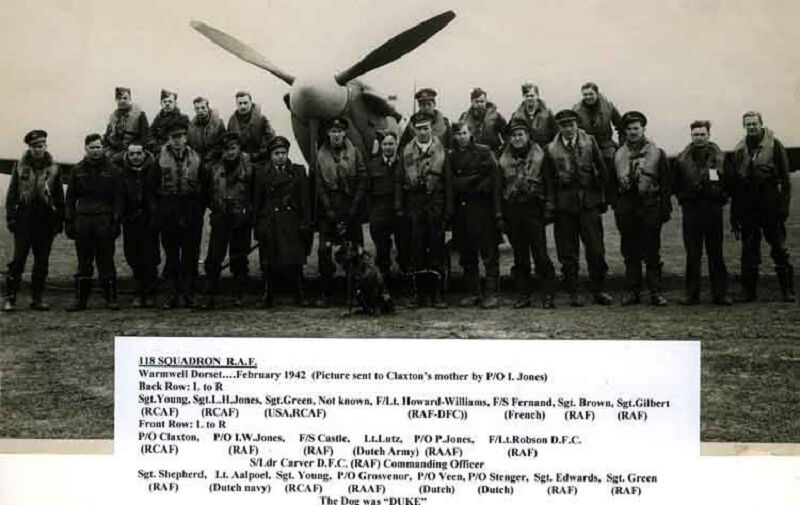
It is believed that F/O Roddy Mackenzie is the unknown Pilot 4th from the left on the back row
9 March 1942, 118 Squadron, in company with 234 and 501 squadrons, participated in a ‘circus’ to escort bombers in a daylight raid over Mazingarbe, to the west of Lille in Northern France. Flying Officer Mackenzie, in Spitfire BL332, failed to return to RAF Iblsey.
An eyewitness account
Victor Hill, who was then 8 years old, clearly remembers what happened that Monday lunchtime.
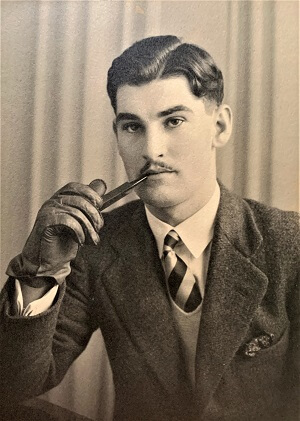
“We were next door at Mrs Moore’s having a cup of tea and chatting, that is my mother was chatting and I was admiring the tame rabbits in cages by the back door. I heard a faltering engine directly above. As I looked up, a pilot was climbing from the cockpit of his Spitfire and deploying his parachute at the same time, it was a flash of brilliant white against a clear blue sky. At under 500 feet it was his only chance. Tragically the chute snagged the tail plane which detached from the fuselage. The pilot, part opened chute, and tail plane were projected half a mile southeast to fall by the village pond in Coldred. Simultaneously the Spitfire’s engine cut out as the plane went into a vertical dive directly above us. I ran in panicked circles expecting instant disaster. As the plane fell, it flattened out and fell a hundred yards away at the start of the lane, at the entrance to a large wheat field. I believe we were saved by the phenomenon known as ground effect.
An RAF lorry appeared fairly soon afterwards, and parked tailgate open at the start of the lane. Men from the searchlight battery recovered the pilot’s body and brought it to the waiting lorry, carried by four men on a sheep wattle, covered by the parachute. The small party moved slowly, silhouetted against the skyline. After 81 years that image remains with me the most poignant of the entire war”.
Finding Roddy

In November 1999, Victor began researching the crash. For some reason the RA Battery Sergeant, who was first on scene, had assumed the pilot was a New Zealander and had told Victor this. He started with the High Commission of New Zealand who provided him with the names of pilots who were lost in the European theatre in March 1942. Sadly, none of them tallied with the crash site in Upton Wood. He then visited all the local cemeteries which had War Graves Commission graves and drew a blank. The breakthrough came when he contacted The Brenzett Aeronautical Society near Ashford in Kent. They had not plotted the crash and agreed to meet Victor at the crash site.
Two members of the society then made a special trip to the National Archives where they accessed operational records for the immediate period. They discovered the identity of the pilot and what happened that day when 118 Squadron, took off on the morning of March 9th to escort 6 Boston bombers to their target in Gosnay, Northern France. The Spitfires were intercepted by General Adolf Galland’s Wing of Focke-Wulf 190s, and Roddy’s plane sustained extensive damage. The Day Book also recorded the Squadron Commander’s praise for Roddy as a team flyer, and how that his suggestions for an improved dinghy release clip had been “taken up by the Wing”.
Victor recalled seeing the wreck later that day; “when in due course we were allowed to view the crashed plane at close quarters, I saw bullet holes that straddled the port side and may have weakened the tailplane structure. I also noted a bullet hole in the side of the cockpit suggesting that the pilot may have been wounded. When the plane spluttered and cut out directly above us it seemed to have run out of fuel. That would be consistent with the round trip it had made. I have speculated that Mackenzie had seen the large wheat field just beyond the crash site and was struggling to reach it for a crash landing with his last drop of fuel. Not until the engine cut out did he start to leave the plane by which time it was too late”.

Flying Officer Roderick William Parke Mackenzie is buried in Commonwealth War Grave No.10286, Square 9, Streatham Park Cemetery in South London. His sacrifice is remembered today, and now thanks to Mr Hill, we know the full extent of his bravery, and a little more about the life of a 21-year-old local boy.
Sources
Victor Hill
Ancestry
Simon Mackenzie
Kate Mackenzie
Sally Sibthorp (née Mackenzie)
Susan Crook (née Mackenzie)
Lindsay Parry
Lesley Koulouris, Archivist Berkhamsted School
https://www.jeversteamlaundry.org/118squadhistory2.htm

